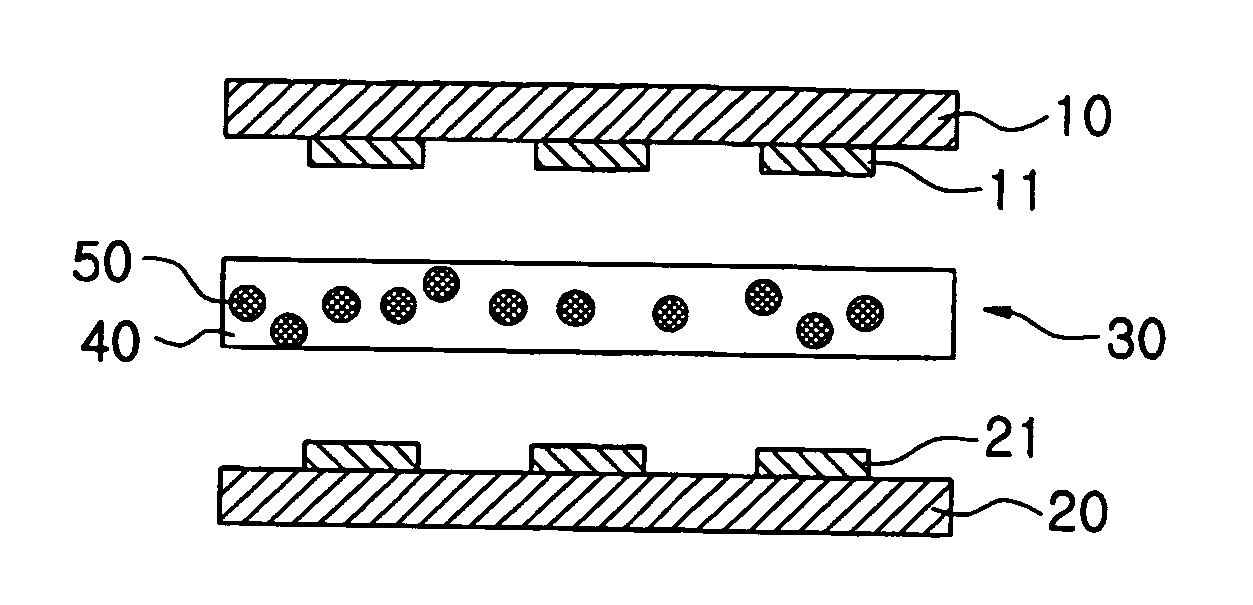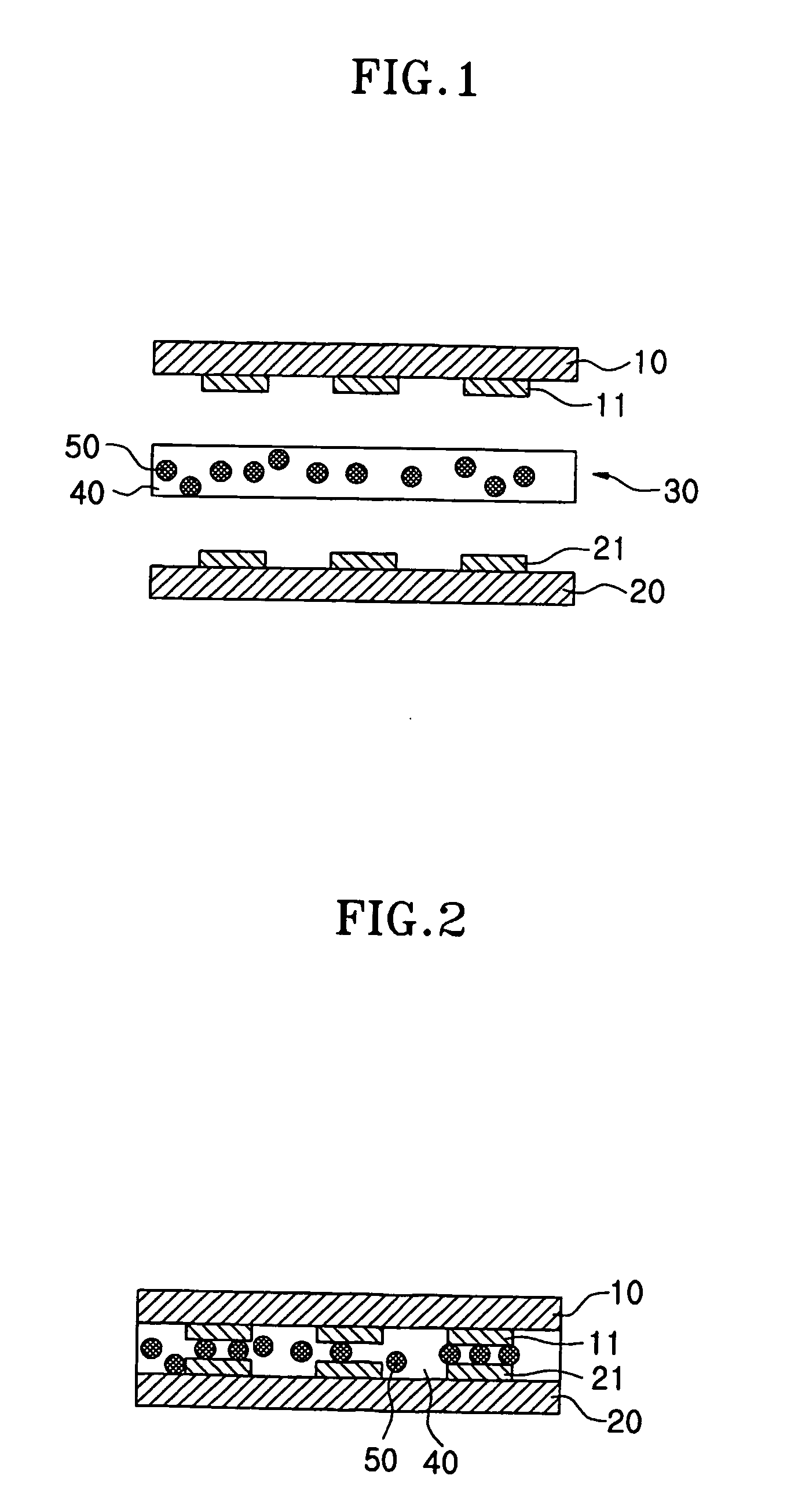Anisotropic-electroconductive adhesive, circuit connection method and structure using the same
a technology of anisotropicelectroconductive adhesive and circuit connection method, which is applied in the directions of dielectric characteristics, transportation and packaging, thermoplastic polymer dielectrics, etc., can solve the problems of providing the connected objects with adhesive, and achieve the effect of preventing a short circuit and ensuring circuit connection in a short tim
- Summary
- Abstract
- Description
- Claims
- Application Information
AI Technical Summary
Benefits of technology
Problems solved by technology
Method used
Image
Examples
first embodiment
[0046] Preparation of Insulating Coated Electroconductive Particles
[0047] Electroconductive particles made of metal-coated resin particles (manufactured by Sekisui Chemical, Micropearl AU205™, 5.0 μm) are put into 5 wt % of acetone solution, namely 3-Methacryloxypropyl trimethoxy Silane (manufactured by Aldrich), and uniformly dispersed therein and then dried to obtain surface-treated electroconductive particles. Subsequently, 3 g of the surface-treated electroconductive particles are added into a solution in which 3 g of polystryene (manufactured by Nova Chemical, STYROSUN 2158™, a softening point is 96° C.) is dissolved in 15 g of n-hexane. After that, the solution is slowly added into 100 g of solution containing nonionic emulsifier (Sorbitan monolaurate) while being mixed uniformly by a homogenizer and then freeze-dried to obtain an insulating coated electroconductive particle which is an electroconductive particle coated with polystryene. Here, a thickness of the coating layer...
second embodiment
[0050] 50 g of phenoxy resin (Inchem Co., PKHC™, an average molecular weight is 45,000) is dissolved into a mixed solution in which toluene (a boiling point is 110.6° C. and an SP value is 8.90) and acetone (a boiling point is 56.1° C. and an SP value is 10.0) are mixed in the weight ratio of 50:50, to prepare a solution containing 40% of solids. Subsequently, the solution is compounded to have, in the aspect of solid weight ratio, 50 g of phenoxy resin, 30 g of trihydroxyethylglycoldimethacrylate resin (manufactured by Kongyoungsa Fat&Oil, 80 MFA™), 1.8 g of t-butylperoxy-2-ethylhexanonate (manufactured by Segiatopina, Ruperox 26™), 20 g of thermosetting phenol resin (manufactured by Kolon Chemical, KRD-HM2™), and 1 g of curing agent (Hexamethylene tetramine, HMTA), thereby manufacturing insulating adhesive component. Then, 3 wt % of the insulating coated electroconductive particles of the first embodiment is mixed into 100 wt % of this adhesive component and dispersed evenly to ma...
PUM
| Property | Measurement | Unit |
|---|---|---|
| exothermic peak temperature | aaaaa | aaaaa |
| thickness | aaaaa | aaaaa |
| temperature | aaaaa | aaaaa |
Abstract
Description
Claims
Application Information
 Login to View More
Login to View More - R&D
- Intellectual Property
- Life Sciences
- Materials
- Tech Scout
- Unparalleled Data Quality
- Higher Quality Content
- 60% Fewer Hallucinations
Browse by: Latest US Patents, China's latest patents, Technical Efficacy Thesaurus, Application Domain, Technology Topic, Popular Technical Reports.
© 2025 PatSnap. All rights reserved.Legal|Privacy policy|Modern Slavery Act Transparency Statement|Sitemap|About US| Contact US: help@patsnap.com



